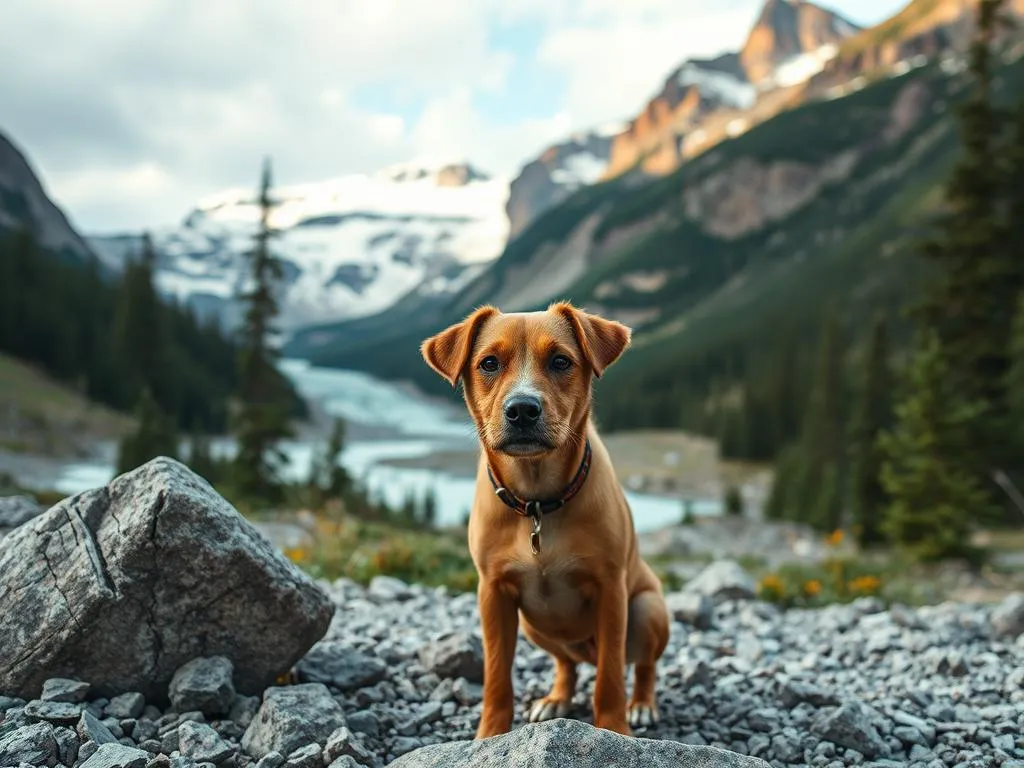
Glacier National Park, located in the northern Rocky Mountains of Montana, is renowned for its breathtaking scenery, diverse wildlife, and a network of hiking trails that attract adventurers from all over the world. For dog owners, understanding the park’s pet policies is crucial for planning a visit that is enjoyable not only for themselves but also for their furry companions. In this post, we’ll explore the regulations surrounding pets, areas where dogs are allowed, preparation tips, and best practices for hiking with dogs in this stunning national park.
Overview of Glacier National Park
General Information
Established in 1910, Glacier National Park covers over a million acres of unspoiled wilderness. The park is famous for its spectacular mountain ranges, glacial lakes, and rich biodiversity, making it a paradise for nature enthusiasts. With over 700 miles of hiking trails and numerous scenic viewpoints, Glacier offers a plethora of attractions, from the historic Going-to-the-Sun Road to the serene waters of Lake McDonald.
Visitor Statistics
Glacier National Park welcomes approximately three million visitors each year, with demographics ranging from families and solo travelers to seasoned hikers and wildlife photographers. Popular activities include hiking, camping, photography, and wildlife viewing. Understanding the park’s pet policies is particularly important for dog owners who wish to partake in these activities together.
Pet Policies in Glacier National Park
General Rules for Pets
When it comes to bringing pets into Glacier National Park, it’s essential to be aware of the regulations in place. Dogs are allowed in certain areas, but there are restrictions to ensure the safety of both pets and wildlife. All pets must be on a leash no longer than six feet at all times. This rule helps prevent pets from chasing wildlife or getting lost in the vast wilderness.
Areas Where Dogs Are Allowed
While dogs can’t explore all of the park, there are designated areas where they are welcome. Some of the trails that allow dogs include:
- Apgar Loop: A gentle, scenic trail that offers views of Lake McDonald.
- Lake McDonald Shoreline: Dogs can enjoy the beautiful lakeside environment.
- Kintla Lake Road: This road provides access to several picnic areas where dogs are allowed.
In addition to trails, there are specific locations for picnicking and camping with dogs. Campgrounds such as Apgar Campground and some backcountry sites permit pets, provided they are kept on a leash.
Areas Where Dogs Are Prohibited
There are several areas within Glacier National Park where dogs are not allowed, primarily for wildlife protection and safety reasons. Prohibited areas include:
- Backcountry trails: These areas are critical habitats for wildlife, including grizzly bears and mountain goats.
- Visitor centers: Dogs are not allowed inside visitor centers to maintain a safe and clean environment.
- Certain high-traffic trails: Popular trails like the Highline Trail and Grinnell Glacier Trail restrict pets due to potential hazards and wildlife encounters.
These restrictions are in place to ensure that both the park’s natural ecosystems and its human visitors remain safe.
Preparing for Your Visit with a Dog
Essential Gear for Dogs
Before heading to Glacier National Park, ensure that you have the necessary gear for your dog. This includes:
- Collars, leashes, and harnesses: A sturdy, comfortable collar and a six-foot leash are essential for keeping your dog under control. Harnesses can provide better security for dogs that tend to pull.
- Water and food supplies: Always bring enough water for both you and your dog, especially during hikes. Portable food bowls and dog-friendly snacks are also handy.
Health and Safety Considerations
Health is paramount when traveling with pets. Ensure your dog is up-to-date on vaccinations and flea/tick prevention. Always have a basic first-aid kit for your dog, which should include:
- Bandages
- Antiseptic wipes
- Tweezers for splinter removal
- Emergency contact information for a nearby veterinarian
Behavioral Training Tips
Training your dog for the outdoors can enhance your experience in the park. Focus on:
- Hiking and outdoor behavior: Teach your dog to walk calmly on a leash and respond to commands such as “leave it” and “come.” This is crucial when encountering wildlife.
- Socialization: Expose your dog to other pets and people before your trip. A well-socialized dog is more likely to behave well in a busy park environment.
Best Practices for Hiking with Dogs
Trail Etiquette
When hiking with dogs in Glacier National Park, practicing good trail etiquette is vital:
- Keeping a safe distance from wildlife: Always maintain a respectful distance from animals. Dogs can trigger aggressive behavior in wild animals, leading to dangerous situations.
- Cleaning up after your pet: Bring biodegradable bags to dispose of waste properly. Keeping the park clean ensures a pleasurable experience for everyone.
Hydration and Rest
Dogs can overheat quickly, especially during long hikes. Be mindful of their hydration needs:
- Regular breaks: Plan for breaks every 30 minutes to an hour, particularly during strenuous hikes. This allows your dog to rest and drink water.
- Finding water sources: Look for streams or lakes where your dog can hydrate safely. Always filter or treat natural water sources before letting your dog drink.
Weather Considerations
Weather can change rapidly in Glacier National Park, so be prepared for varying conditions:
- Preparing for weather changes: Check the forecast before your visit and pack accordingly. Bring a doggy raincoat or a blanket if rain is expected.
- Signs of overheating or fatigue: Watch for signs that your dog may be overheating, such as excessive panting, drooling, or sluggishness. If you notice these signs, take breaks and provide water immediately.
Alternatives to Bringing Dogs
Dog Boarding Options Nearby
If the park’s regulations do not align with your plans, consider local dog boarding options. Several facilities in nearby towns provide excellent care for pets while you enjoy the park. Look for:
- Local boarding facilities: Many offer daycare services and overnight stays, ensuring your dog is safe and well-cared for.
- Recommendations for dog sitters: If you prefer a home environment for your dog, consider hiring a local pet sitter.
Pet-Friendly Accommodations
If you decide to bring your dog, numerous accommodations welcome pets:
- Hotels and lodges: Many hotels in the surrounding areas allow pets, often with specific guidelines and fees.
- Camping options for dog owners: Look for campgrounds that permit dogs, providing a great way for your furry friend to enjoy the great outdoors as well.
Conclusion
Understanding the pet regulations in Glacier National Park is essential for a successful visit with your dog. While there are restrictions in place to protect both wildlife and visitors, ample opportunities exist for enjoying the park together. By preparing adequately and following best practices for hiking with dogs, you can create lasting memories in one of America’s most beautiful national parks. Remember to prioritize responsible pet ownership and the safety of your furry companions, ensuring that your adventure in Glacier National Park is enjoyable for everyone involved.









